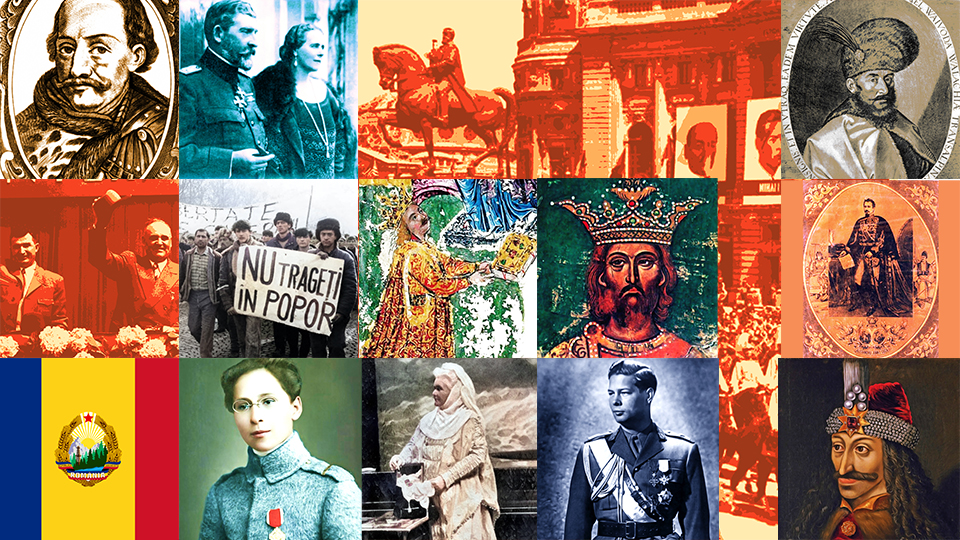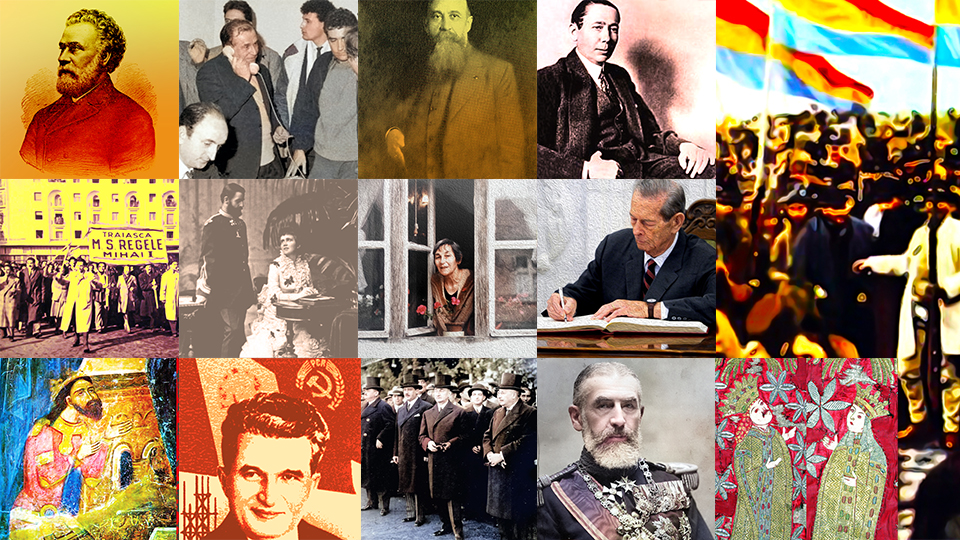80 Years Since the Installation of the Legionnaire / Antonescu Regime
On 6 September 1940, the fascist regime led by General Ion Antonescu came to power in Romania

Steliu Lambru, 28.09.2020, 13:00
On 6 September 1940, the fascist regime led by General Ion Antonescu came to power in Romania. It turned Romania into a National-Legionnaire state, where all democratic freedoms were removed. The main actors who made this moment possible were, in this order, King Carol II, General Ion Antonescu, and the Legionnaire movement led by Horia Sima.
King Carol II, an adventurous spirit with authoritarian tendencies, is believed to be the main party responsible for the territorial disaster suffered by Romanian in 1940. In June, Bessarabia and Northern Bukovina were annexed by the USSR, and in August, Hungary took over territories in the north of Transylvania, through the Second Vienna Award. On September 5, under pressure from the street, Carol II abdicated the throne of Romania, leaving in charge General Ion Antonescu. This second main actor had addressed to the king a virulent memo protesting this capitulation without a struggle in the face of the Soviet Union, which resulted in his being exiled, but also gaining him great prestige in the eyes of the armed forces. The third main actor was the Legionnaire movement. This organization had been put together in 1927 as a fascist organization by Corneliu Zelea Codreanu. The movement was a part of Romanian political life in the 1930s under various names, such as the Iron Guard, the Corneliu Zelea Codreanu Group, and the Everything for the Country party. King Carol IIs personal authoritarian rule, which lasted from February 1938 to September 1940, was a period of persecution for the Legionnaires, with their leader Codreanu himself being assassinated.
When the main democratic party leaders, Dinu Bratianu and Iiuliu Maniu, refusing to form a governing coalition, another ruling coalition was formed, with legionnaires on one side and civilian and military associates of Ion Antonescu. We spoke about the resulting so-called National-Legionnaire state with historian Ioan Scurtu:
“This was the first time in the history of Romania when the country was led according to a specific ideology. The Legionnaires came to power with the will to organize Romania in their own image, so to say. Which is why they managed to proclaim that the country was now a National-Legionnaire state. It was no longer a regular state, it was a Legionnaire state. They began transforming the country starting with the economy. They appointed so-called Romanization commissioners to take over Romanian enterprises, many of them Jewish, but also Romanian, such as the Letea factory in Brasov, owned by National Liberal Party leader Dinu Bratianu himself. A plan for development had to be put together in line with Legionnaire ideology, sighting first and foremost agriculture, and then the other branches of the economy, considering that 80% of Romanians were peasants.”
After the economy came culture and education. Here is Ioan Scurtu again:
“Ideologically and culturally, by taking over the National Ministry of Education and the National Propaganda Ministry, the Legionnaires tried to impose the idea that the individual is a mere cogwheel in the huge mechanism that is the state. The individual had to conform to directives issued by the Legionnaires. In terms of foreign policy, the orientation was clearly towards Germany and Italy, because as early as December 1937, during the parliamentary election campaign, Corneliu Zelea Codreanu said that within 48 hours after his Legionnaires won the polls, Romania would have an alliance with Rome and Berlin. Upon the insistence of the fascists, and by his own will, Ion Antonescu signed on November 23, 1940, Romanias alliance with Germany, Italy, and Japan.”
Ioan Scurtu told us that Romania turned from a weakened state into a state in dishevelment:
“There was a general confusion, because such a reorganization could not yield palpable and immediate results. The change in the management of companies, replacing them with members of the Legion, most of which had no experience and skills to lead the economy, meant the companies were badly run. Teachers and prestigious professors were removed from the classroom, replaced by fascist sympathizers to promote their ideology. This was applied to high schools too. An entire propaganda apparatus was put in place to eulogize the Legionnaire movement, headed by Codreanu and Sima, and to praise Germany and Italy. After Romania had been closely allied with Great Britain and France in order to defend its territorial integrity, no one could forget that the Vienna Award had been imposed by Hitler and Mussolini. This debacle in the Romanian state could not result in anything good, because a state is a very cumbersome machine, with a great deal of inertia, which cannot be changed overnight. When you replace the manager of a large enterprise you cannot expect it to improve overnight and function at the highest parameters.”
The National-Legionnaire state lasted until January 1941, when it was replaced by the personal military dictatorship of General Ion Antonescu. The rivalry between Antonescu and the Legionnaires came to a head in January 1941, when Germany sided with the general in taking over the Romanian state.






























